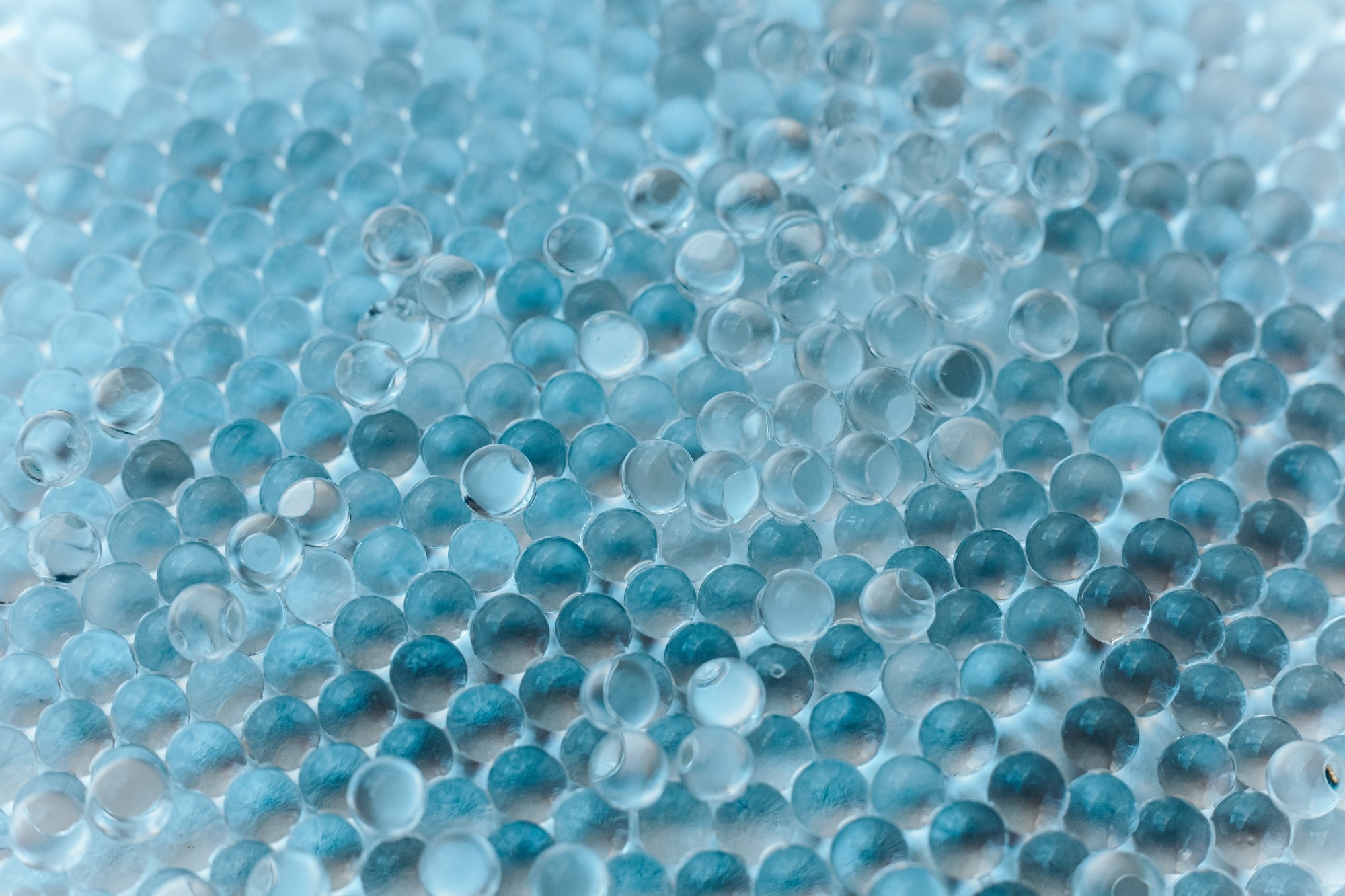A newly developed organohydrogel regulates the transport of hydro- and lipophilic molecules in a single matrix. Not only does the material overcome traditional limitations in dual molecular transport, but it is also printable, adjustable, and scalable.
 Study: Colloidal Heterostructures Enable Interfacial Transport ofImmiscible Molecules in Printable Organohydrogels. Image Credit: Vladeep/Shutterstock.com
Study: Colloidal Heterostructures Enable Interfacial Transport ofImmiscible Molecules in Printable Organohydrogels. Image Credit: Vladeep/Shutterstock.com
The study's findings, published in Advanced Materials, report the novel heterostructured organohydrogels. The researchers tuned molecular diffusion by controlling temperature- and shear-driven microstructural rearrangements, demonstrating controllable molecular transport pathways within heterostructured organohydrogels.
This work provides a mechanistic framework for adaptive, printable soft materials that share features with emulsions and bijels, advancing applications in drug delivery, soft-matter manufacturing, and pollutant remediation.
Traditional hydrogels face inherent challenges in simultaneously delivering hydrophilic and hydrophobic cargos because their predominantly water-based networks poorly accommodate lipophilic molecules.
To overcome this, various multiphase delivery platforms, such as liposomes and emulsions, have been developed to incorporate both aqueous and nonpolar components.
However, these systems often suffer a trade-off, which can range from losing out on structural stability, manufacturing simplicity, or requiring precise formulation control and complex synthesis steps that hinder scalability and consistent performance.
This study addresses these limits with its colloidal heterostructured organohydrogel that allows both hydrophilic and lipophilic molecules to traverse well-defined pathways.
The researchers have designed a system that uses surfactant-stabilized nanoemulsion precursors, which self-organize into interpenetrating oil-rich and water-rich domains under thermal or shear stimuli.
The result is a responsive, printable hydrogel with adjustable release kinetics, scalable processing, and compatibility with a diverse range of molecular payloads.
Get all the details: Grab your PDF here!
Creating the Dual Mode Organohydrogels
The researchers synthesized thermoresponsive organohydrogels from oil-in-water nanoemulsion precursors in which poly(dimethyl siloxane) droplets were dispersed within an aqueous phase containing poly(ethylene glycol) diacrylate and sodium dodecyl sulfate.
These nanoscale droplets become reservoirs for lipophilic cargos such as coumarin-6, while the surrounding water-rich matrix accommodates hydrophilic molecules like methylene blue.
When heated above the gelation temperature, PEGDA molecules bridged adjacent oil droplets to form an interpenetrating oil-water network, which was subsequently stabilized through ultraviolet photopolymerization.
The team used a combination of rheology, imaging, and diffusion analysis to establish structure-transport relationships.
Small-amplitude oscillatory rheometry monitored the material’s viscoelastic evolution and gelation kinetics, while machine-learning-assisted segmentation of confocal micrographs quantified phase tortuosity and characteristic domain length scales.
Custom diffusion cells with fluorescence detection enabled real-time tracking of molecular transport, and swelling studies provided mesh-size estimates that correlated with the solute's effective diffusion coefficients.
Additive manufacturing demonstrated process-driven control of transport without modifying the chemical composition.
3D extrusion printing and centrifugal bead fabrication introduced tunable thermal and shear stimuli, producing structures with programmable diffusion behavior that is entirely governed by processing parameters.
What Were the Key Findings?
The team found that the two probe molecules, methylene blue (MB, hydrophilic) and coumarin-6 (C6, lipophilic), move through the organohydrogel in completely different ways.
C6 mostly stays in the oil phase and is transferred out by “hopping” from droplet to droplet across a connected oil-rich network.
When the oil domains are smaller (shorter correlation length, Lc), those jumps get shorter and easier, so the effective diffusion coefficient increases and follows a clear trend: Deff scales roughly as Lc-8. Increase the synthesis temperature, reduce Lc, and C6 moves faster.
MB behaves more intricately. Initially, when the hydrogel mesh is relatively open, MB primarily diffuses through the water-rich polymer network.
As the mesh size decreases to the size of the MB molecule itself (approximately 14 Å), its motion becomes increasingly hindered. Then things begin to change. At precursor temperatures roughly 5 °C above the gel point and higher, MB can no longer easily thread the bulk mesh; instead, it migrates to the negatively charged oil–water interface, where it is electrostatically attracted to the anionic SDS surfactant.
Once at that interface, MB effectively travels in two dimensions along a boundary rather than through the bulk gel. Local mesh expansion near the droplets, because PEGDA is scavenged to bridge and gel the oil phase, likely loosens steric confinement and helps this faster interfacial pathway.
Fluorescence imaging supports this finding: hydrophilic dyes accumulate along the oil-water boundaries, and complementary experiments with Nile Blue (hydrophilic) and Nile Red (lipophilic) reveal partial overlap of their signals at the interface, confirming that positively charged hydrophilic species tend to accumulate and migrate along that charged boundary.
On top of that, processing adds another layer of control. 3D-printed samples show shear-dependent behavior, with an initial burst release followed by a much slower, sustained regime, while centrifugally formed microbeads offer scalable encapsulation with tunable diffusivity.
Put together, temperature, microstructure, and shear are working in tandem. The result is a soft-matter platform where interfacial and bulk pathways can be engineered to program how immiscible molecules move through the material.
Organohydrogels Going Forward
This research establishes a practical framework for tunable molecular transport in structurally engineered organohydrogels.
The interplay between microstructural characteristics, mesh confinement, and electrostatic interfacial effects enables precise control over release kinetics, spanning two orders of magnitude for representative solutes.
It demonstrates that continuous processing and 3D printing can produce hydrogels with tailored shapes, diffusivities, and multifunctionalities that bridge fundamental colloidal phenomena with scalable manufacturing.
While future biomedical applications will require biocompatible surfactants and consider toxicity, the SDS concentrations used here exceed typical no-effect levels reported for cell-based systems. The conceptual advance is significant: interfaces can function as both barriers and active conduits, facilitating molecular migration.
Journal Reference
Dowdy-Green, et al. (2025). Colloidal Heterostructures Enable Interfacial Transport of Immiscible Molecules in Printable Organohydrogels. Advanced Materials, e13787. DOI: 10.1002/ADMA.202513787
Disclaimer: The views expressed here are those of the author expressed in their private capacity and do not necessarily represent the views of AZoM.com Limited T/A AZoNetwork the owner and operator of this website. This disclaimer forms part of the Terms and conditions of use of this website.